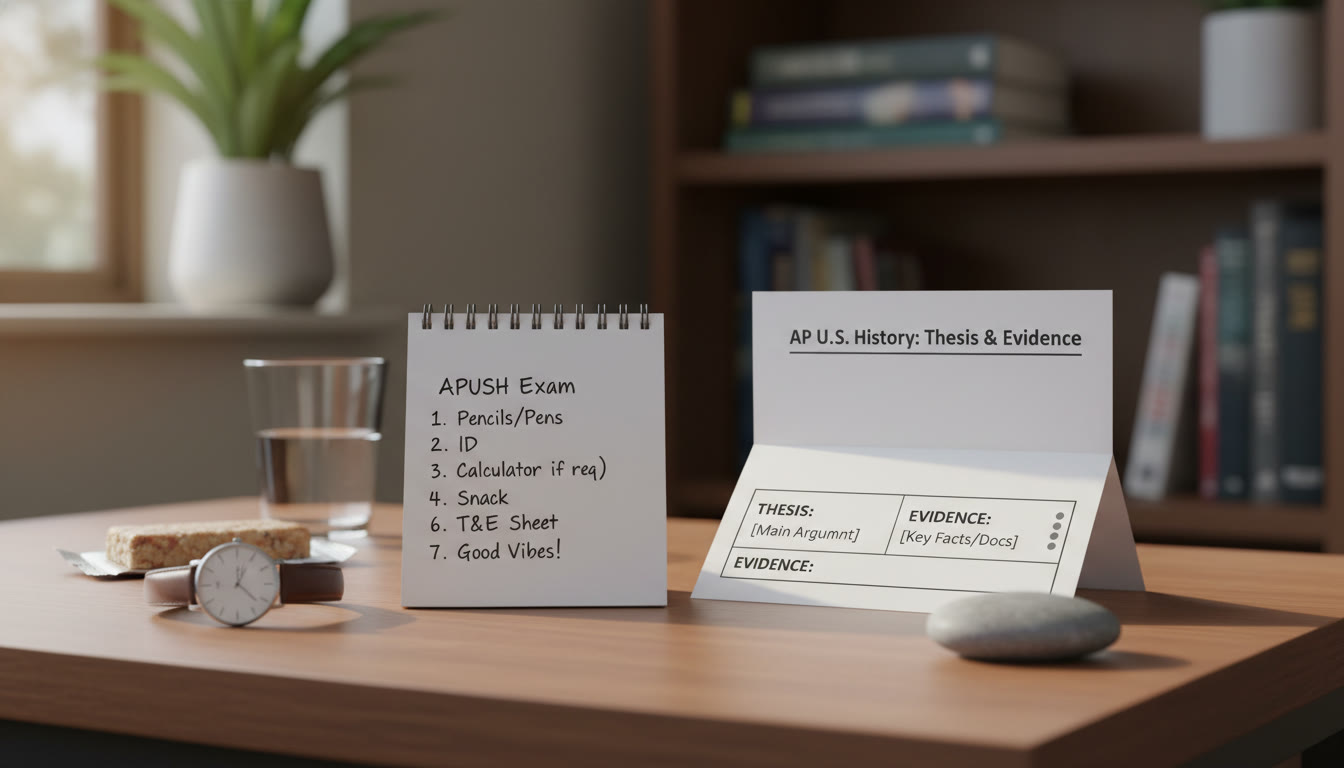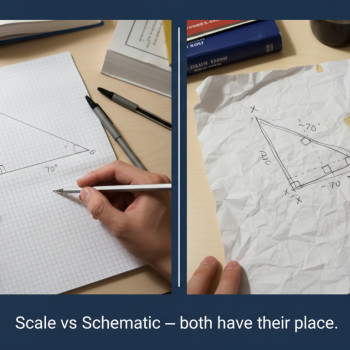From 4→5: Why Small, Surgical Changes Beat Big Overhauls
If you already score a 4 on an AP exam, congratulations — you understand the content, can apply skills, and perform under pressure. That said, the jump from a 4 to a 5 is rarely about learning three new units overnight. It’s a series of precise upgrades: clearer organization, smarter time use, subtler evidence, and a sharper command of the exam’s scoring priorities. This post walks you through targeted strategies, real examples, and study-friendly systems to make that last stride feel intentional, confident, and entirely within reach.

Understand What Separates a 5 from a 4
Before changing your routine, know exactly what raters see. AP readers score on content mastery, reasoning, evidence, and composition (where applicable). At the 4→5 boundary, differences are often subtle:
- Precision of claim: moving from broadly correct assertions to tightly worded, defensible claims.
- Quality of evidence: choosing the most convincing examples and linking them explicitly to your claim.
- Depth of reasoning: showing chains of cause-and-effect, counterpoints, or synthesis rather than surface-level description.
- Exam mechanics: formatting, timing, and following prompt verbs precisely (compare “analyze” to “describe”).
If you treat the exam like a conversation with a college instructor — not a checklist — the leap becomes less mysterious and more tactical.
Precision Upgrade 1: Reverse-Engineer the Rubric
Raters use rubrics or scoring guidelines that tell you what earns each point. Your job is to translate rubric language into micro-actions you can practice and repeat under time pressure.
How to turn rubric items into drills
- Highlight action verbs in the prompt (e.g., analyze, evaluate, justify) and write a one-line plan that answers that verb directly before you write.
- For evidence-based responses, keep a mental (or written) short-list of 3–5 “high-value” examples you can adapt — historical events, key theorems, experiments, or quotes — so you don’t fumble for supporting details in the moment.
- Create flash drills where you practice turning a single piece of evidence into a three-sentence analysis that directly ties the evidence to the claim.
Practicing to the rubric trains you to supply exactly what raters expect, reducing points lost to omission rather than misunderstanding.
Precision Upgrade 2: Evidence Selection Over Volume
Students often think more examples equal a higher score. Not true. A 5-level answer tends to use fewer, stronger pieces of evidence and analyzes them more deeply.
Example: Quality vs Quantity in Practice
Imagine an AP U.S. History essay about causes of the Progressive Era reforms. A 4-level response lists multiple reforms and cursory causes. A 5-level response picks two or three pivotal reforms (e.g., the 1906 Pure Food and Drug Act, the 1912 antitrust actions) and connects each to a clear causal chain: urbanization → public health crises → scientific advances → legislative response, with specific names and dates. The 5 demonstrates cause, mechanism, and consequence — and links back to the prompt at every turn.
Precision Upgrade 3: Micro-Structure Your Responses
Structure is the skeleton of an impressive answer. Clear topic sentences, signposting, and short, evidence-focused paragraphs help readers (scorers) follow your logic effortlessly.
Micro-Structure Checklist
- Start with a one-sentence thesis that explicitly answers the prompt.
- Each paragraph should open with a claim, offer specific evidence, then analyze that evidence in one or two sentences that tie it to the claim.
- Conclude with a brief synthesis sentence that connects the paragraph back to the thesis and to broader implications.
Practice this structure with timed prompts. It becomes a muscle memory: efficient, coherent, and persuasive.
Precision Upgrade 4: Time Budgeting with Checkpoints
Timing often trips up near-miss students. A 5-level answer looks complete, not frantic. Use a time budget with internal checkpoints.
Sample Time Budgets
| Section | Duration | Checkpoint Goal |
|---|---|---|
| Reading/Prompt Analysis | 3–5 minutes | Underline verbs, list 2–3 evidence options, write one-line thesis |
| Planning | 2–4 minutes | Bullet paragraph topics and evidence |
| Writing | Remaining time | Write 3–4 structured paragraphs |
| Review | 2–4 minutes | Fix wording, ensure thesis alignment, check transitions |
Use a watch or the in-room timer to practice staying on schedule. When rehearsed, this pacing prevents the common trap of a rushed conclusion that costs nuance points.
Precision Upgrade 5: Language and Tone That Signal Expertise
In AP scoring, authoritative language matters. Being tentative or vague reduces perceived mastery. Instead of writing “This might show…” write “This demonstrates…” Use precise academic verbs: demonstrates, illustrates, undermines, corroborates, complicates.
Vocabulary and Syntax Tips
- Avoid filler phrases and hedging when you have evidence. Hedge only when acknowledging limits of the evidence or an alternative interpretation.
- Use transition phrases to show chains of reasoning: “Consequently,” “Because,” “Therefore,” “However,” “Conversely.”
- For data-driven responses, cite specific figures or percentages when available. Being numeric when appropriate signals rigor.
Precision Upgrade 6: Practice With Calibration — Not Just Repetition
Blind repetition of past prompts produces familiarity, but calibration — comparing your answers to model responses and scoring rubrics — builds understanding of the gap between a 4 and a 5.
How to Calibrate
- Write a timed response, set it aside for 24 hours, then grade it against the official scoring guidelines. Be brutal and honest; note missing rubric elements.
- Make a short “fix plan” listing 3 specific changes you would make to move your essay up one point: stronger evidence, tighter thesis, or deeper analysis.
- Re-write the essay implementing those changes and compare the two versions to see concrete improvement.
Calibration trains you not only to practice but to meaningfully improve practice quality.
Precision Upgrade 7: Build a High-Value Example Bank
Create a personal repository of adaptable examples for quick recall on test day. But structure it so examples are analysis-ready, not just a list.
How to Build Yours
- For each example, write a 2-line dossier: (1) What happened (one sentence), (2) Why it matters — the causal link you’ll use (one sentence).
- Tag examples by theme or concept (e.g., “Progressive Era: public health”; “Macroeconomics: demand shocks”).
- Review and condense the bank weekly so recall is quick under pressure.
Precision Upgrade 8: Turn Mistakes into Targeted Mini-Lessons
A common pitfall: students keep repeating the same weak move (e.g., vague introductions or misapplied formulas). Turn each recurring mistake into a 10–20 minute targeted lesson.
Example Mini-Lessons
- Weak thesis statements: spend 20 minutes practicing thesis rewrites using different prompts until you can craft a crisp thesis in under one minute.
- Misapplied evidence: practice chunking — quote, context, analysis — for three examples daily.
- Time mismanagement: simulate only the writing portion with strict time limits for three consecutive days.
Precision Upgrade 9: Test-Day Micro-Rituals
Small, reliable rituals reduce cognitive friction and preserve working memory for the task at hand. Build a short, repeatable routine you follow for every free-response question.
Sample Micro-Ritual
- 0:00–0:15 — Read prompt and underline key verbs/constraints.
- 0:15–0:45 — Jot one-line thesis and two evidence options; pick the strongest.
- 0:45–1:30 — Outline three paragraph bullets with the claim-evidence-analysis format.
- Write and review according to your time budget.
Practice this rhythm so it becomes accustomed — calm, efficient, and highly repeatable.
Precision Upgrade 10: Use Smart External Help — When It Fits
Sometimes you need tailored feedback to spot the 4→5 gap. Personalized tutoring can be the fastest route when it targets your specific weak points: thesis clarity, evidence selection, or timing. A good tutoring experience offers:
- One-on-one guidance focused on your scoring rubric missteps.
- Tailored study plans to shore up specific content or skill gaps.
- Feedback loops that show progress with concrete before/after samples.
For students who want concentrated gains, Sparkl’s personalized tutoring provides that blend — expert tutors, tailored study plans, and AI-driven insights to track progress. When used to address the exact sticking points identified in your calibration work, targeted tutoring can convert small, high-leverage changes into a 5.
Putting It Together: A 6-Week Precision Plan
Below is a practical six-week plan that respects schoolwork and extracurriculars while focusing on the exact upgrades that push from 4 to 5.
| Week | Focus | Goals |
|---|---|---|
| Week 1 | Rubric Mastery & Calibration | Grade two past free-response answers; list recurring weaknesses. |
| Week 2 | Evidence Bank & Micro-Structure | Create 12 analysis-ready dossiers; practice structured paragraphs. |
| Week 3 | Timing & Rituals | Implement timed budgets; rehearse micro-rituals on three prompts. |
| Week 4 | Language & Argument Strength | Do targeted mini-lessons (thesis drills, precision verbs). |
| Week 5 | Simulation & Review | Take two full practice sections; calibrate with scoring guidelines. |
| Week 6 | Polish & Tutoring | One targeted tutoring session to fix the biggest remaining gap; light review and mental prep. |
Real-World Example: How a Small Change Helped Jenna Go 4→5
Jenna, an AP Biology student, routinely scored 4 on practice exams. Her answers were correct and complete but lacked mechanistic depth. We traced the issue to a habit: she listed facts but rarely connected them to specific biological mechanisms.
Intervention: Jenna built an “analysis bridge” exercise — for every fact she listed, she wrote an immediate two-sentence mechanistic explanation (how X produces Y). She practiced this after every topic question for two weeks and then took a timed free-response section. Result: her responses gained that extra causal clarity readers associate with a 5. One targeted habit change — practice linking fact to mechanism in two sentences — produced the jump.
On Stress and Mindset: Why Confidence Is Tactical
Believing you can achieve a 5 changes how you allocate energy on test day. Anxiety consumes working memory and makes you second-guess precise claims. Build confidence with small, repeatable wins: a cleanly written thesis, a well-analyzed paragraph, or a timing run where you met every checkpoint. Each success is evidence that your system works.
Final Checklist Before Exam Day
- Review your evidence bank and pick three high-value examples per theme.
- Practice your micro-ritual once under timed conditions.
- Pack logistics: permitted calculators, pencils, photo ID, water, and snacks for after the test.
- Sleep priority: two nights before the exam, prioritize 8 hours — cognitive endurance matters more than one last cram session.
- Plan a quick mental warm-up: one 10-minute timed prompt the morning of the exam to cue the brain into familiar rhythm.

Why Targeted Help Can Be a Force Multiplier
Most students have enough content knowledge to earn a 4. What they lack is surgical refinement. Personal tutoring focused on the 4→5 gap — one-on-one critique of essays, timed simulations with feedback, and a coach who holds you accountable — compresses improvement. Sparkl’s model of expert tutors, tailored study plans, and AI-driven insights can accelerate this process by giving precise, prioritized feedback so you practice less but practice better.
Wrapping Up: Small Changes, Big Outcome
Moving from a 4 to a 5 is not mystical. It’s deliberate. It’s about understanding the rubric, choosing better evidence, tightening structure, rehearsing pacing, and fixing recurring errors with targeted mini-lessons. Use a plan, calibrate frequently, and when appropriate, bring in personalized tutoring to eliminate stubborn weaknesses faster.
Think of this as upgrading from a finely tuned instrument to a virtuoso performance. The content base is already there — you’re polishing precision, clarity, and confidence. If you commit to the micro-practices in this post, that 5 is closer than you think.
Quick Takeaway — The Four Micro Habits to Practice Daily
- One-minute thesis drill: craft 3 thesis statements from random prompts.
- Two-evidence analysis: pick an example and write a two-sentence mechanism linking it to a claim.
- Timed paragraph: write a full claim-evidence-analysis paragraph in 10 minutes.
- One calibration: compare one timed answer to the rubric; list three improvements.
Go Forward
If you’ve been landing 4s, celebrate — but don’t plateau. Apply precision, rehearse intentionally, and let small, consistent upgrades become your new normal. When you need outside perspective, targeted tutoring can identify the exact micro-moves that close the gap. Keep the goal in sight: not just the letter of the score, but the clearer thinking and persuasive writing that a 5 represents. You’ve got this.

















No Comments
Leave a comment Cancel